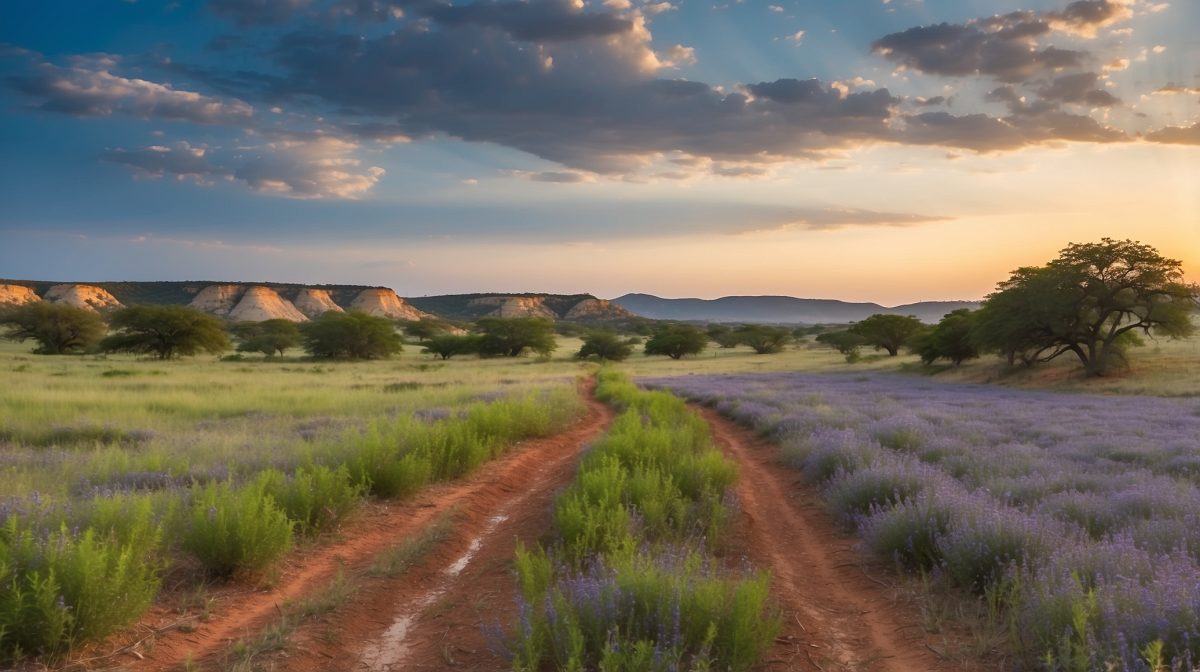Planting zones, for those of y’all who might be new to the game, are like a roadmap for your garden. They tell you what’s gonna grow best in your neck of the woods. It’s all about the temperature patterns, and these zones help you figure out what’ll bloom best from season to season. Here in the Texas Hill Country, we’ve got a unique mix of sun, soil, and sky that makes our planting zone something special. So, pull up a chair, pour yourself some sweet tea, and let’s dive into what makes our corner of the world a gardener’s paradise.
Understanding Planting Zones
Let’s start with a bit of schooling on the USDA Hardiness Zone Map. This here’s a tool that gardeners and farmers countrywide use to figure out where their greenery’s got the best shot at growing. It’s like a weather report for your plants, breaking down the country into areas based on their average annual minimum winter temperature. Now, that might sound as complex as a two-step at a dance hall, but it’s important ’cause it helps you choose plants that can handle the cold snaps we sometimes get out here.
So, how do they figure out these zones? Well, it’s a mix of science and good old-fashioned observation. They look at things like temperature, elevation, and even how close you are to a body of water. This is crucial for us folks in the Hill Country ’cause our weather can be as unpredictable as a bull in a china shop. Understanding these zones means you won’t plant something that’ll keel over at the first sign of frost. It’s all about giving your garden the best chance to put down roots and flourish.
The Texas Hill Country’s Unique Climate
Now, the Texas Hill Country ain’t just any place—it’s a land of rolling hills, wide-open skies, and a climate that can throw you for a loop if you’re not prepared. We’ve got summers that’ll make you think you’re closer to the equator than the Lone Star State, and every once in a while, Jack Frost comes nipping at our noses out of the blue. This dance between hot and cold means you need to be as savvy as a fox when it comes to your garden planning.
Our weather patterns are as varied as the wildflowers in spring. You might be sweating through a hundred-degree day and then find yourself reaching for a jacket when a cold front blows through. These swings are part and parcel of life here, and they play a big role in what you can plant. But don’t you worry, with a little know-how, you can turn this wild weather to your advantage and have a garden that’s the envy of the neighborhood.
Identifying Your Zone in the Texas Hill Country
Alright, it’s time to get down to brass tacks and figure out your exact planting zone here in the Hill Country. We’ve got a range of zones, from 7 to 9, and that means there’s a good bit of variety in what you can plant depending on where you hang your hat. The secret to success is knowing your zone like the back of your hand. You’ll find that some areas are warmer, some are cooler, and elevation can change things quicker than a jackrabbit on a date.
To pinpoint your zone, you can use tools like the USDA’s zone map or even some handy apps on your smartphone. But remember, we’ve got microclimates too—little pockets where the climate can be different from the surrounding area. That’s why it’s important to keep an eye on your own backyard’s climate. Take notes, observe, and before long, you’ll have a sense of what works best right where you are. And don’t forget, your neighbors are a wealth of knowledge—nothing beats local experience when it comes to gardening in the Hill Country.
Choosing the Right Plants for Your Zone
Now that you’ve got a handle on your zone, it’s time to talk plants. We’ve got a whole corral full of options for the Hill Country gardener. You want native plants? We’ve got ’em in spades. These hardy varieties are built to withstand our Texas heat and the occasional chill. They’re like the cowboys of the plant world—tough, resilient, and they look good doing it. Think about adding some Texas sage, black-eyed Susans, or bluebonnets to your spread for a start.
But what about non-natives, you ask? Sure thing, we can grow those too. There are plenty of plants from other parts of the world that have taken to the Hill Country like a duck to water. Just make sure they’re suited for our zone, and you’ll be good to go. Plants like rosemary, lavender, and even some citrus trees can thrive here with the right care. So, don’t be afraid to experiment a little—variety’s the spice of life, after all.
Maximizing Your Garden’s Potential
Alright, you’ve got your zone down and you’ve picked out some plants. Now let’s talk about making your garden reach its full potential. Here in the Hill Country, we’ve got soil that can be as stubborn as a mule, so you’ll need to give it some attention. Start by amending your soil with compost or other organic matter—it’s like feeding your garden a hearty breakfast. It’ll help your plants grow strong and healthy, and it can improve water retention too.
Speaking of water, we’ve got to talk about conservation. Water’s precious around these parts, and your garden needs to sip it, not gulp. Mulching is your friend—it keeps moisture in the soil and keeps those roots cool when the sun’s beating down. And think about installing a drip irrigation system. It’ll deliver water right where your plants need it, with none going to waste. With these strategies, you’ll keep your garden blooming even when Mother Nature’s being stingy with the rain.
Overcoming Common Planting Challenges
Gardening in the Texas Hill Country ain’t always a walk in the park. We’ve got our share of challenges, from pests that think your garden’s their personal buffet to droughts that test your resolve. But like any good Texan, we face these troubles head-on. Start by choosing pest-resistant plants and using natural predators to your advantage—ladybugs and praying mantises are your allies. And when it comes to drought, well, that’s where your water-wise gardening practices come in handy.
If you find yourself up against a problem, remember, you’re not alone. There’s a whole community of Hill Country gardeners out there who’ve faced the same issues and come out on top. Share stories, swap tips, and before you know it, you’ll turn those challenges into victories. Your garden will be a testament to your grit and determination, and there’s nothing more satisfying than that.
Conclusion
Well, folks, we’ve covered a lot of ground, from understanding our unique planting zones to choosing the right plants and overcoming the challenges of gardening in the Texas Hill Country. Remember, knowing your zone is just the start—it’s about embracing the land, the climate, and the spirit of this special place. So, take what you’ve learned, put on those gardening gloves, and get to planting. Your garden’s gonna be a thing of beauty, a true reflection of the Texas Hill Country’s charm and resilience. Happy gardening, y’all!
FAQs
What’s the most reliable way to determine my exact planting zone in the Texas Hill Country?
The most reliable way is to check the USDA Hardiness Zone Map or use a gardening app. Don’t forget to consider local knowledge and observations for microclimates.
Can I grow tropical plants in the Texas Hill Country planting zones?
It’s tough, but with the right care and choosing more hardy tropical varieties, you can have some success, especially in the warmer zones and with proper winter protection.
How do I adjust my planting schedule for the zone I’m in?
Adjust your schedule by starting with the average last frost date in spring and first frost date in fall for your zone. Pay attention to weather patterns for any adjustments.
What are some native plants that are sure to flourish in the Texas Hill Country?
Native plants like Texas sage, black-eyed Susans, bluebonnets, and live oak trees are sure to flourish in the Hill Country climate.
Are there resources available for Hill Country gardeners looking to learn more about their zone?
Yes, local nurseries, gardening clubs, and Texas A&M AgriLife Extension are great resources for Hill Country gardeners.


